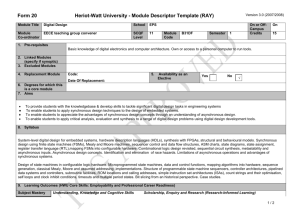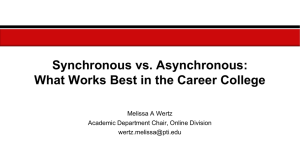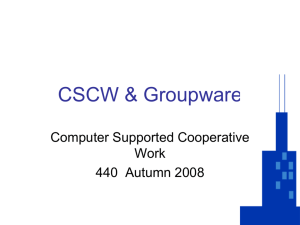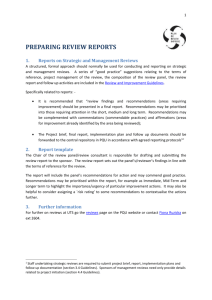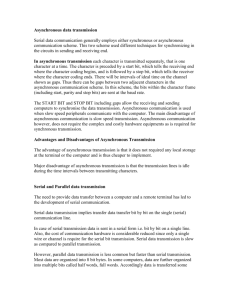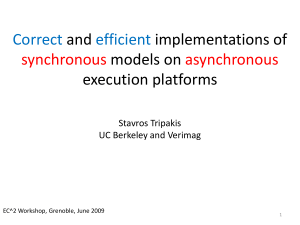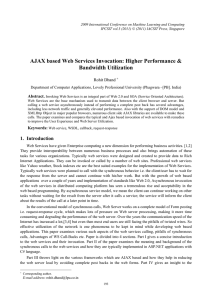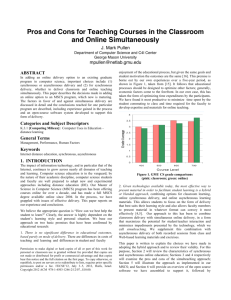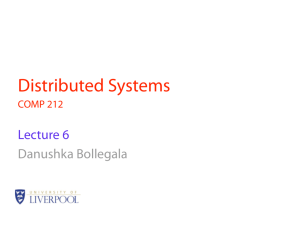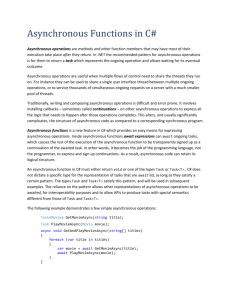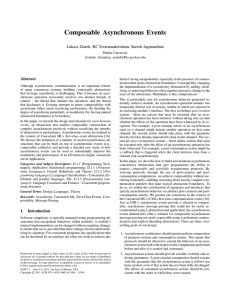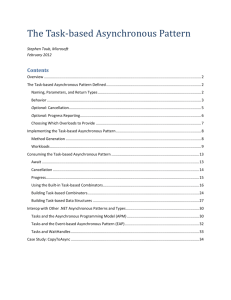Asynchronous workshop allocation method
advertisement
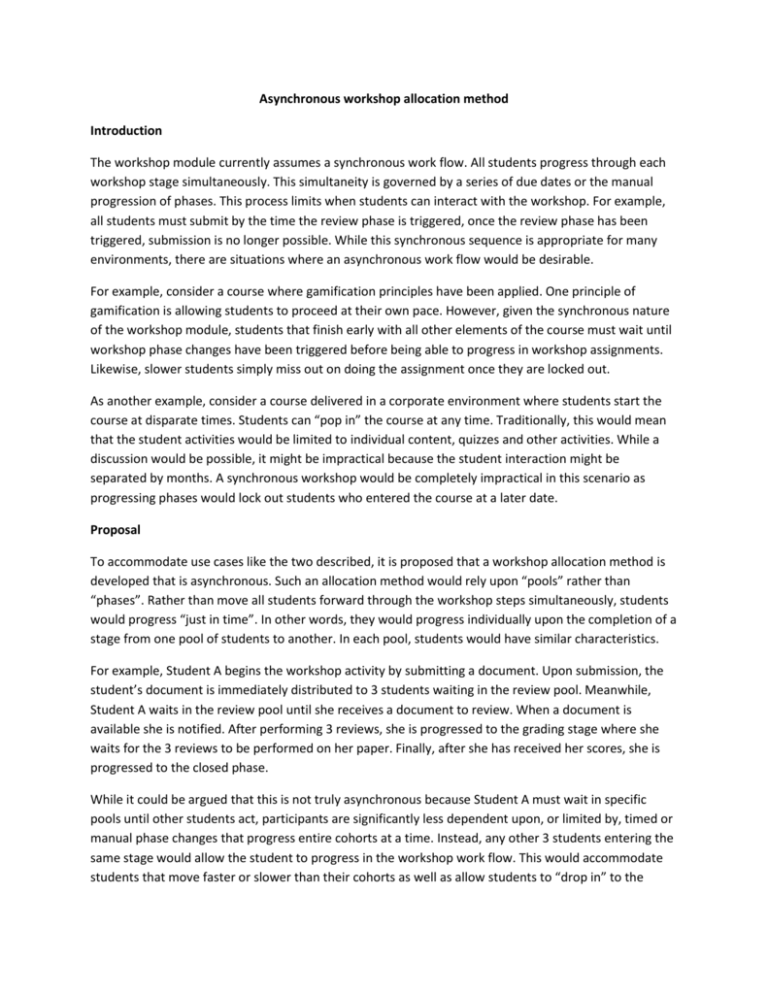
Asynchronous workshop allocation method Introduction The workshop module currently assumes a synchronous work flow. All students progress through each workshop stage simultaneously. This simultaneity is governed by a series of due dates or the manual progression of phases. This process limits when students can interact with the workshop. For example, all students must submit by the time the review phase is triggered, once the review phase has been triggered, submission is no longer possible. While this synchronous sequence is appropriate for many environments, there are situations where an asynchronous work flow would be desirable. For example, consider a course where gamification principles have been applied. One principle of gamification is allowing students to proceed at their own pace. However, given the synchronous nature of the workshop module, students that finish early with all other elements of the course must wait until workshop phase changes have been triggered before being able to progress in workshop assignments. Likewise, slower students simply miss out on doing the assignment once they are locked out. As another example, consider a course delivered in a corporate environment where students start the course at disparate times. Students can “pop in” the course at any time. Traditionally, this would mean that the student activities would be limited to individual content, quizzes and other activities. While a discussion would be possible, it might be impractical because the student interaction might be separated by months. A synchronous workshop would be completely impractical in this scenario as progressing phases would lock out students who entered the course at a later date. Proposal To accommodate use cases like the two described, it is proposed that a workshop allocation method is developed that is asynchronous. Such an allocation method would rely upon “pools” rather than “phases”. Rather than move all students forward through the workshop steps simultaneously, students would progress “just in time”. In other words, they would progress individually upon the completion of a stage from one pool of students to another. In each pool, students would have similar characteristics. For example, Student A begins the workshop activity by submitting a document. Upon submission, the student’s document is immediately distributed to 3 students waiting in the review pool. Meanwhile, Student A waits in the review pool until she receives a document to review. When a document is available she is notified. After performing 3 reviews, she is progressed to the grading stage where she waits for the 3 reviews to be performed on her paper. Finally, after she has received her scores, she is progressed to the closed phase. While it could be argued that this is not truly asynchronous because Student A must wait in specific pools until other students act, participants are significantly less dependent upon, or limited by, timed or manual phase changes that progress entire cohorts at a time. Instead, any other 3 students entering the same stage would allow the student to progress in the workshop work flow. This would accommodate students that move faster or slower than their cohorts as well as allow students to “drop in” to the course at any time (assuming there is sufficient volume of students to allow for at least 3 to be in the same stage at a time). Also, this kind of asynchronous interaction could increase a student’s sense of community in a course that might traditionally only contain content and individual activities. As students are able to review the work of others and be reviewed, they can feel that they are not alone in the course. Specifications Paper allocation must be prioritized so that those papers that are oldest and have the fewest reviews are allocated for review first One must review x number of papers before being allowed to progress to the grading stage Person Workflow Receive notification that a paper is ready to review Student Submits Document Are there any papers ready to review? Wait until a paper is available to review Grade paper Receive notification that a paper is ready to review Grade paper Receive notification that a paper is ready to review Grade paper Has student document been reviewed 3 times? Wait until all the reviews are in Student notified of grade Document Workflow Reviewer grades paper and submits grade Document Submitted Is there anyone waiting to review a paper? Document Allocated and Reviewers notified Reviewer grades paper and submits grade Have all 3 reviewers submitted grade? Reviewer grades paper and submits grade Wait until a student is available to review Wait until all the reviews are in Grade submitted and student notified

